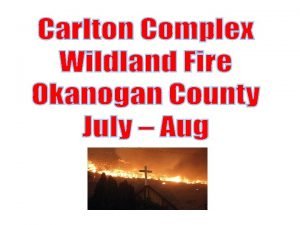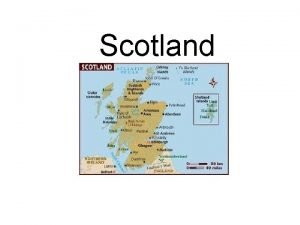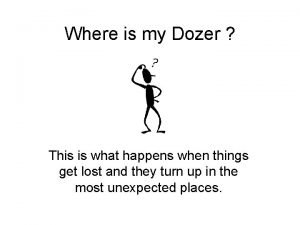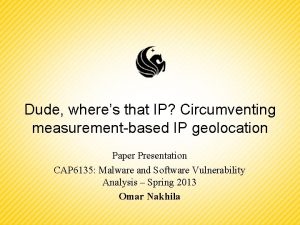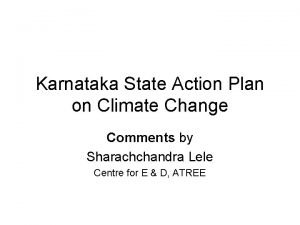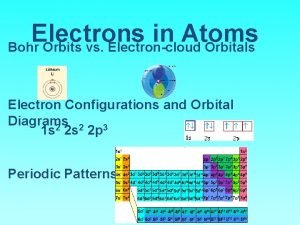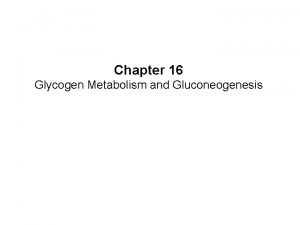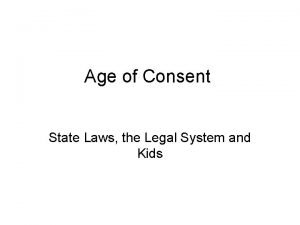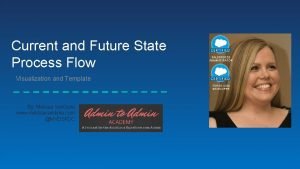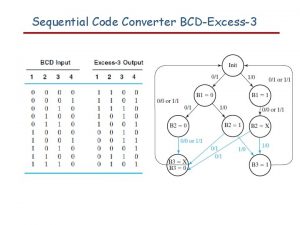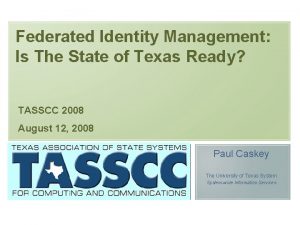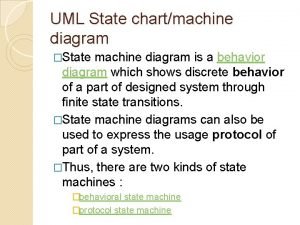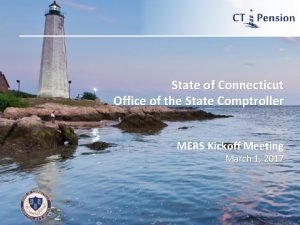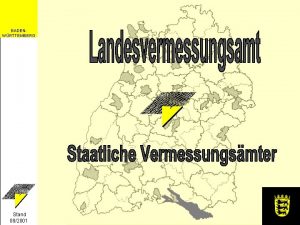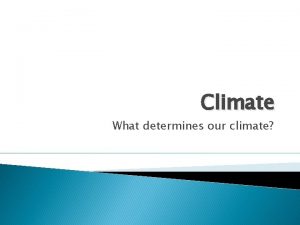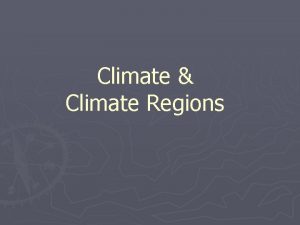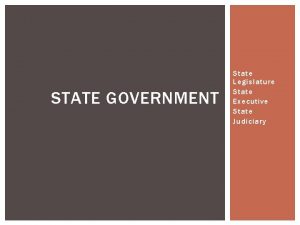U S State Climate Leadership Wheres It Stand









































- Slides: 41

U. S. State Climate Leadership: Where’s It Stand Where’s It Going? COP 10 Buenos Aires, Argentina 11 December 2004 Ken Colburn Executive Director NESCAUM kcolburn@nescaum. org

Panelists • Kenneth A. Colburn Executive Director Northeast States for Coordinated Air Use Management (NESCAUM) • Frederick F. Butler Commissioner New Jersey Board of Public Utilities • David W. Hadley Commissioner Indiana Utility Regulatory Commission • Andrew Spahn Director of Energy, Environment and Infrastructure Programs National Association of Regulatory Utility Commissioners (NARUC) • Hon. James Marzilli State Representative Massachusetts House of Representatives

Overview • NESCAUM: – Founded 37 years ago by New England Governors – The 8 Northeast states in the U. S. – CT, MA, ME, NH, NJ, NY, RI, VT • Population and Economy (% of U. S. ) – 8 NESCAUM states – NESCAUM + California Pop. 14% 27% GDP 18% 31%

Why Are States Acting? • • Significant Relative Impact Prior Success in “Leading by Example” Concern over Public Health & Quality of Life Defensively: – Sense of urgency over exposure to climate risks – Protecting existing resource / recreation economies • Offensively: – Economic opportunity learning curve; early adopters secure competitive advantage – “Tuning the economy” to the future reality – Starting sooner => less difficulty, less risk

States Have Significant Relative Impact Top Emitters of CO 2 (1998 Mtons C): 1 2 3 4 5 6 7 8 9 10 UNITED STATES OF AMERICA 1486 CHINA 850 RUSSIAN FEDERATION 390 JAPAN 310 INDIA 290 NORTHEAST STATES + CALIFORNIA 230 GERMANY 225 UNITED KINGDOM 150 NORTHEAST STATES 130 CANADA 125 Source: G. Marland et al. , Oakridge National Lab, 1998; EIA, 1999

Prior “Lead by Example” Success • State Acid Rain laws: – Federal Acid Rain provisions: 1984 -5 1990 • State laws for Toxic Air Contaminants: 1987 – Federal Toxics Program: • State “ 4 -P” laws for power plants: – Federal “ 4 -P” law: • Statewide GHG reduction law: – Federal GHG law: • State/Regional GHG registries: – Rigorous Federal Registry: 1990 2001 -2 (Introduced) 2003 (Introduced) 1999 -2000 ? • State GHG reductions from vehicles: 2002 – Federal vehicle GHG law: ?

Interaction with Air Pollution (Particulate Matter, Ozone, etc. ) Burlington VT PM 2. 5 7 July 2002 FRM : 61. 4 ug/m 3 Duplicate FRM: 62. 6 ug/m 3 CAMM 24 -hr mean: 61. 9 ug/m 3 And this day is not a violation of standards!

Changes in Dominant Forest Types Source: U. S. Global Change Research Program Impacts to forest products industry, paper making, foliage season, maple sugaring, hunting habitat, etc.


But note that the scale is exponential! Why does this happen? “Ask an engineer and you get nothing but problems. Tell an engineer and you get nothing but solutions. ”

States Don’t Want to be Luddites • 2/3 of U. S. coal capacity > 30 years old. • Who is using 30 year old: – Telephone technology? – Television technology? – Computer technology? – Automotive & aircraft technology? – Materials, construction, manufacturing? – Internet?

Old or New Energy Path? Sustainability Higher Energy Efficiency & Renewables Path (MORE jobs, reliable, secure, clean, and exportable) ECONOMIC EFFICIENCY Competitive Advantage Lost to Delay Energy Intensity Path (LESS jobs, reliable, secure, clean, and exportable) Lower Now Later TIME

State and Regional Actions on Climate Change State • Renewable Energy Requirements • Reducing Motor Vehicle GHG Emissions • Reducing Power Sector GHG Emissions • Mandatory GHG Reporting • Litigation • Others Regional • New England Governors and Eastern Canadian Premiers Climate Action Plan • Regional Greenhouse Gas Initiative (RGGI) • Regional Greenhouse Gas Registry (RGGR) • West Coast Governors Global Warming Initiative • Western Governors Energy Efficiency and Renewable Energy Proposal

State Climate Action: Renewable Energy Requirements 10% 2015

State Climate Action: Reducing Motor Vehicle GHG Emissions (1) • California’s “Pavley” law (A. B. 1493 2002) requires “maximum feasible and cost effective” CO 2 cuts from passenger cars & trucks; Gov. Schwarzenegger supportive • Finalized 24 Sept 2004 for Model Year 2009 • GHG Reductions: 2012 - 22% - $325 (Net cost savings!) 2016 - 30% - $1050 • Will also apply to 7 Northeast LEV states (~30% of U. S. auto market); Canada? EU? • As expected manufacturers sued 7 Dec 2004

State Climate Action: Reducing Motor Vehicle GHG Emissions (2) • Vehicle Procurement & Use: – ME: Executive Order to reduce VMT of state employees – MA: Requirement for ULEV state vehicles – MA & RI: Limit of purchase of SUVs in state fleets – NY: Purchase of hybrid buses/state fleets • CAUTION: Efforts in Congress to threaten states’ rights to clean up vehicles

State Climate Action: Reducing Power Sector GHG Emissions • 1997 OR Legislation calling for newly built power plants to offset ~17% of CO 2 emissions. • 2001 MA 4 P Regulation, include 10% CO 2 cut below 199799 baseline • 2002 NH 4 P Legislation, required cuts CO 2 to 1990 levels by 2010 • 2004 NJ regulated CO 2 as an air contaminant • 2004 CT signed into law state goals (economy-wide reductions, appliance standards, registry) • 2004 WA bill requires 20% offset of emissions for new power plants over 25 MW

State Climate Action: Mandatory GHG Reporting • NJ in 2003, stationary combustion sources must report CO 2 and CH 4. • ME in 2003, all major facilities must report six Kyoto GHGs • CT in 2004, all sources >10 K tons CO 2 E • WV? Announced intention in 2004 “State of the State” message • NESCAUM doing Model Rule for mandatory GHG reporting

State Climate Action: Litigation • In October 2003, 12 states and cities challenged EPA’s assertion that it doesn’t have authority to regulate CO 2 under the Clean Air Act. • In October 2003, US Court of Appeals for the 8 th Circuit ruled feds failed to take into account longterm effects of air pollution, including CO 2, for proposed railroad to transport coal. • In July 2004, officials from eight states and New York City filed a lawsuit under “nuisance” provisions seeking to force five utilities to reduce carbon dioxide emissions. • Nov. 2004, NESCAUM amicus brief for IGCC.

Numerous Other State Climate Actions • CT legislation dedicated $0. 5 billion of system benefits charge funds for clean energy and energy efficiency initiatives • NY introduced a green building tax credit • CA initiated “Hydrogen Highway Network” to accelerate progress toward hydrogen economy • NJ utility settlement includes CO 2 cuts • MA combined Environment, Transport, & Housing ministries under one roof; issued new GHG plan • MD and CT adopted standards for residential and commercial appliances

Regional Climate Action: NEG-ECP Climate Change Action Plan • Short-Term: – Reduce GHG economy-wide to 1990 levels by 2010 • Mid-Term: – Reduce at least 10% below 1990 levels by 2020 – Review every 5 years; adjust if necessary • Long-Term: – Reduce GHG “sufficiently to eliminate any dangerous threat to the climate “ – Expected to be “ 75 -85% below current levels” • Reaffirmed after 2002 elections…

Regional Climate Action: Regional Greenhouse Gas Initiative (RGGI) • In April 2003, NY Governor Pataki invited NE and Mid-Atlantic states to join • Cap-and-trade program for power sector’s CO 2 emissions; model rule by April 2005 • Can expand to other sectors/gases in future phases • Participating states created Staff Working Group with oversight by environmental & energy regulatory commissioners

Regional Climate Action: Regional Greenhouse Gas Initiative (RGGI) • Nine Participating States – CT, DE, MA, ME, NH, NJ, NY, RI, VT – 14% of U. S. GHG Emissions – 3. 4% of World GHG Emissions • Others Observing – MD, PA, DC, NC? , Canadian Provinces • Schedule: Model rule due April 2005 • See www. rggi. org

Regional Climate Action: Regional Greenhouse Gas Initiative (RGGI) • RGGI progress: – Convened, designed process & schedule, created Stakeholder Process (Resource Panel, website, informal outreach, stakeholder group for modeling/data) – Technical Analysis (energy modeling, economic modeling, data gathering, options) – Policy Groundwork (baseline, applicability threshold, internal flexibility mechanisms, offsets, RGGR, model rule drafting)

Regional Climate Action: Regional Greenhouse Gas Initiative (RGGI) • Next steps / remaining issues: – Determine cap level & mechanics, including state budgets, allocation methodologies (auction? generation? load? ), etc. – Address “leakage” – Determine initial offsets policy – Do individual state implementation processes • RGGI’s future? – Expand to other sources? Gases? Offsets? states? – Integrate with EU ETS? Australia?

State Climate Action: Regional Greenhouse Gas Registry (RGGR) • The RGGI states plus PA are participating in RGGR; MD is observing; others interested… • Quantification and reporting protocols based on the WRI-WBCSD GHG Protocol • Also working with California Climate Action Registry • Target schedule: January 1, 2006 • Design and software elements being decided now

State Climate Action: Regional Greenhouse Gas Registry (RGGR) GHG Registry (e. g. , RGGR) Regulatory Voluntary Entity-wide Projects (Offsets) Mandatory Reporting Emissions Tracking RGGI Allowance Tracking

Regional Climate Action: West Coast Governors’ Global Warming Initiative • • Initiated: September 2003 Includes: California, Oregon, & Washington Purpose: Joint effort to reduce warming Initial Components: – Group purchasing for fuel efficient fleets – Uniform appliance efficiency standards – Measuring & reporting GHG emissions – Reducing diesel generator use on ships

Regional Climate Action: West Coast Governors’ Global Warming Initiative • CA, OR, WA Governors approved 36 staff recommendations on 18 November 2004, including: – New targets for reducing annual fleet GHGs – Collaborate on hybrid vehicle purchases – Goals/incentives to increase retail energy sales from renewables >1% per year through 2015 – More stringent energy efficiency standards for products and state building codes • Also, agreed to explore measures, including: – – Adopt state and regional goals Adopt motor vehicle GHG emission standards (Pavley? ) Develop market-based carbon allowance program (RGGI 2? ) Expand markets for EE, RE, and alternative fuels

Regional Climate Action: Western Governors’ Association EE/RE • April 2004, Gov. Arnold Schwarzenegger (RCA) and Gov. Bill Richardson (D-NM) proposed a “Clean Energy Initiative” for the Western Governors Association (19 western states, 3 Pacific islands) • Proposed developing 30, 000 MW of “clean energy” in West by 2015 • Called for increasing energy efficiency by 20% by 2020

And “State Activities” Don’t Include… • Municipalities – 140+ ICLEI cities; 155 Mayors’ letter to Congress • Scientists – 1000 wrote to Senate • Businesses – Many acting without mandate • Investors – Shareholder resolutions • Not just U. S. States – Australia; others? • NCEP – Bipartisan report calls for mandatory GHG cuts with price cap “safety valve”

Vital Missing Tool: Integrated Modeling Framework Global Climate Model Regional-Scale Climate Model Meteorology Policy Goal Climate Impacts Models Energy Model i Em Health/Valuation Function ns o i s s Air Quality Model Health Benefits Model Expenditures Economic Model Costs, Benefits, & Adaptations due to Climate Change Key Economic Indicators Wet/Dry Deposition Ambient Concentrations & Temp Health Effects Incidence & Cost. Benefit

“First Principles” of Good Energy/Economic Modeling (1) 1. Must accurately characterize the initiatives being designed and implemented 2. Must use appropriate cost & performance characterization of technologies & policies 3. Must use appropriate algorithms providing a reasonable, credible, and fair economic assessment of cost-effective technology and program deployment

“First Principles” of Good Energy/Economic Modeling (2) 4. Must assess benefits as thoroughly as costs in modeling results 5. Must make transparent all assumptions and inputs & clearly disclose known or likely biases 6. Must illuminate the nature of any uncertainties and assess sensitivity

Policy Implications • Climate issue isn’t going to “go away” – More and more evidence of impacts – More and more states acting in U. S. (& Australia) – Other nations providing assistance – Kyoto Protocol entry into force and EU ETS startup “makes it real” – Approaching a “tipping point”? • Technology R&D is good, but there won’t really be a market until there is a driver – States recognize: By helping to create the market, they’re more likely to be winners in it.

Policy Matters!

United States Senate Committee on Commerce, Science, And Transportation Hearing on Impacts of Climate Change and States’ Actions May 6, 2004 Sen. John Mc. Cain, Chairman Concluding Remarks


Thank you for your time and attention!

National Commission on Energy Policy (NCEP) Bipartisan, 3 -year study Report released 8 Dec 2004

NCEP Recommendation Areas • Enhance oil security • Reduce risks from climate change – Mandatory, economy-wide GHG limits with $7 cost cap (safety valve) – Link further action to developed & developing nation commitments • • • Enhance energy efficiency Ensure affordable, reliable energy supplies Strengthen essential energy systems Develop energy technologies for the future See www. energycommission. org for report
 Wheres washington state
Wheres washington state Climate change 2014 mitigation of climate change
Climate change 2014 mitigation of climate change Wheres scotland
Wheres scotland Where is thera
Where is thera Whete is greece
Whete is greece Wheres manchuria
Wheres manchuria Where is my dozer
Where is my dozer Wheres ip
Wheres ip Wheres the ip
Wheres the ip Rob is your pen friend
Rob is your pen friend Wheres the nile river
Wheres the nile river Wheres the ozone layer
Wheres the ozone layer Wheres fetty wap
Wheres fetty wap Wheres hadrians wall
Wheres hadrians wall Wheres my mobey
Wheres my mobey Stand up stand up for jesus
Stand up stand up for jesus Nanny shine has got
Nanny shine has got Karnataka state action plan on climate change
Karnataka state action plan on climate change Transactional vs transformational leadership
Transactional vs transformational leadership Adaptive management style
Adaptive management style Capable but cautious performer
Capable but cautious performer Bpa state leadership conference texas
Bpa state leadership conference texas Leadership institute texas state
Leadership institute texas state Properties of liquids
Properties of liquids State to state regionalism
State to state regionalism S r flip flop excitation table
S r flip flop excitation table Transition bugs in software testing
Transition bugs in software testing Svjetlana kalanj bognar
Svjetlana kalanj bognar Shell vs subshell
Shell vs subshell T vs r state hemoglobin
T vs r state hemoglobin Absorptive state and postabsorptive state
Absorptive state and postabsorptive state Metabolism glucose
Metabolism glucose Age of consent per state
Age of consent per state Salesforce 101: introduction to salesforce kurs
Salesforce 101: introduction to salesforce kurs Asynchronous circuit
Asynchronous circuit Duncker diagram example
Duncker diagram example State state graphs and transition testing
State state graphs and transition testing What is initial state + goal state in search terminology?
What is initial state + goal state in search terminology? Tasscc state of the state
Tasscc state of the state Submachine state in state diagram
Submachine state in state diagram Office of the state comptroller ct
Office of the state comptroller ct Climate zones of the united states
Climate zones of the united states
